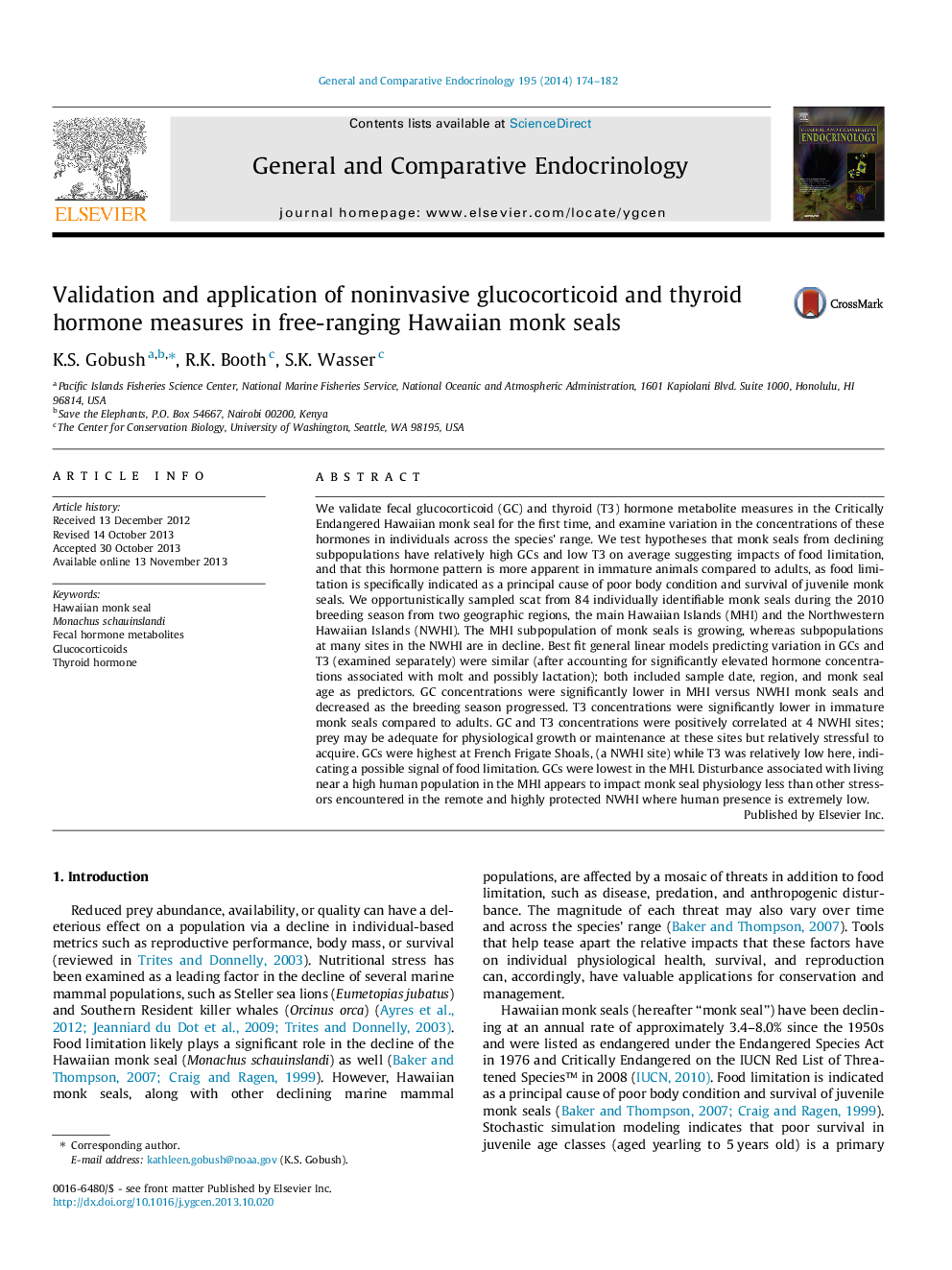| کد مقاله | کد نشریه | سال انتشار | مقاله انگلیسی | نسخه تمام متن |
|---|---|---|---|---|
| 5901199 | 1568910 | 2014 | 9 صفحه PDF | دانلود رایگان |
- We validated glucocorticoid and thyroid hormone measures for the Hawaiian monk seal.
- Molt and lactation were associated with the highest GC and T3 concentrations.
- Hormone concentrations also varied with sample date, region, and monk seal age.
- Monk seals in the human-populated MHI had lower GC values than those in the remote NWHI.
- T3 concentrations were significantly lower in immature monk seals compared to adults.
We validate fecal glucocorticoid (GC) and thyroid (T3) hormone metabolite measures in the Critically Endangered Hawaiian monk seal for the first time, and examine variation in the concentrations of these hormones in individuals across the species' range. We test hypotheses that monk seals from declining subpopulations have relatively high GCs and low T3 on average suggesting impacts of food limitation, and that this hormone pattern is more apparent in immature animals compared to adults, as food limitation is specifically indicated as a principal cause of poor body condition and survival of juvenile monk seals. We opportunistically sampled scat from 84 individually identifiable monk seals during the 2010 breeding season from two geographic regions, the main Hawaiian Islands (MHI) and the Northwestern Hawaiian Islands (NWHI). The MHI subpopulation of monk seals is growing, whereas subpopulations at many sites in the NWHI are in decline. Best fit general linear models predicting variation in GCs and T3 (examined separately) were similar (after accounting for significantly elevated hormone concentrations associated with molt and possibly lactation); both included sample date, region, and monk seal age as predictors. GC concentrations were significantly lower in MHI versus NWHI monk seals and decreased as the breeding season progressed. T3 concentrations were significantly lower in immature monk seals compared to adults. GC and T3 concentrations were positively correlated at 4 NWHI sites; prey may be adequate for physiological growth or maintenance at these sites but relatively stressful to acquire. GCs were highest at French Frigate Shoals, (a NWHI site) while T3 was relatively low here, indicating a possible signal of food limitation. GCs were lowest in the MHI. Disturbance associated with living near a high human population in the MHI appears to impact monk seal physiology less than other stressors encountered in the remote and highly protected NWHI where human presence is extremely low.
Journal: General and Comparative Endocrinology - Volume 195, 1 January 2014, Pages 174-182
